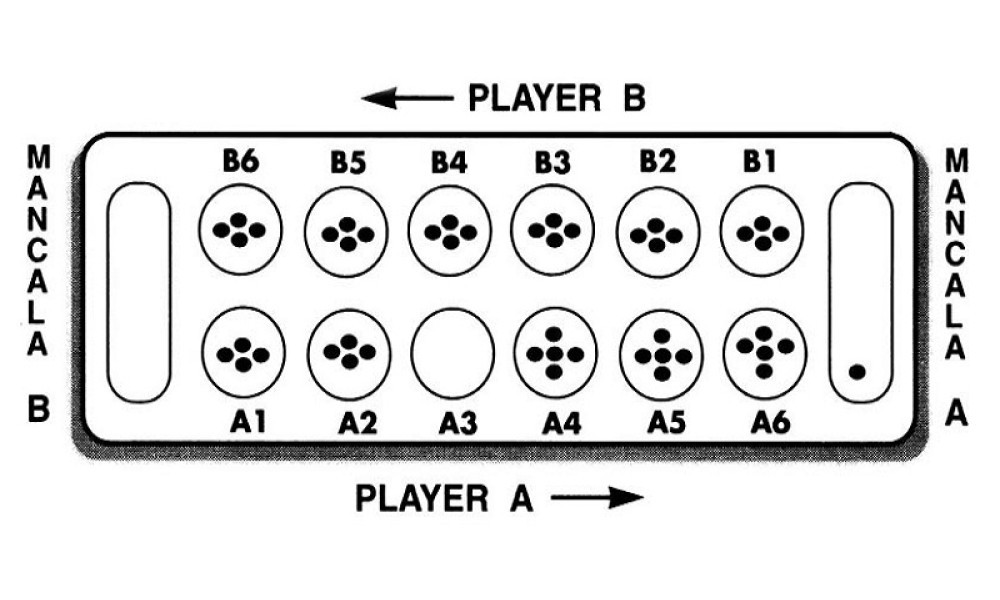

Mancala is a classic game of math and strategy for 2 players. Set Up: Place 4 stones in each of the 12 round spaces. The winner is the player with the most stones in their Store. The remaining stones go to the other player’s Store. The game ends when either player has no more stones in their six circles. The player who has the most stones in their store wins. Each player will count the number of stones in their store. Winning the Game When all six pockets on one side are emptied the game ends. … For most of its variations, Kalah is a solved game with a first-player win if both players play perfect games. Kalah, also called Kalaha or Mancala, is a game in the mancala family invented in the United States by William Julius Champion, Jr. Does the first player always win Mancala? … The strategy is simple enough that, if both players are fairly good, the person who goes first will almost always win. The game continues until one player has no pieces in any of his or her six spaces. How do you play Mancala for beginners?ĭoes the person who goes first in Mancala always win?Īfter every move that does not end in the mancala and is not a capture, it is the other player’s turn. … The winner is the player with the most pieces.

The player who still has pieces on his/her side of the board when the game ends captures all of those pieces. The game ends when all six pockets on one side of the Mancala board are empty. – Be able to adjust your strategy at any time. Winning Mancala requires continual planning and calculating, so going second isn’t an instant loss. Right away, you have a chance to score points and force your opponent to be on the defensive. Moving first gives you an opportunity to control the board. Mancala is a game where the leading player drives the action. The winner is the person with the most stones in his mancala after counting. His opponent then takes all of the stones on his side and places them in his mancala. The player who has the most stones in their store wins.The game is over when a player (not both) has no more stones on his side. When all six pockets on one side are emptied the game ends. If the last stone is placed in an empty pocket on the player’s own side, the player takes this stone as well as the other player’s stones across from the empty pocket landed in, and places them in their own store. If the last stone is deposited in the player’s own store, the player gets another turn. However, if they encounter the other player’s store, that store is skipped over. If there are enough stones to go past the player’s own store, stones are deposited continuing on the other side’s pockets. If a player encounters their own store, a stone is deposited in it. The player will remove all the stones from that pocket, and deposit one stone at a time into neighboring pockets going counter-clockwise until the stones run out. One player will start the game by picking any pocket containing stones from their own side. The object of this game is to see which player can get the most stones into their store.

Place 4 stones in each of the 12 pockets. The game board is made of 2 rows of 6 small holes known as “pockets”, and large holes on opposite ends called “mancalas” or “stores”.Įach player has 6 pockets directly in front of them and a store to their right. Place the game board between the two players lengthwise. The term mancala is derived from the Arabic word, “Naqala,” which means, “to move.” Mancala is a game with ancient heritage from Eritrea and Ethiopia, dating back as far as the 6th and 7th century, and is still enjoyed through to this day.


 0 kommentar(er)
0 kommentar(er)
